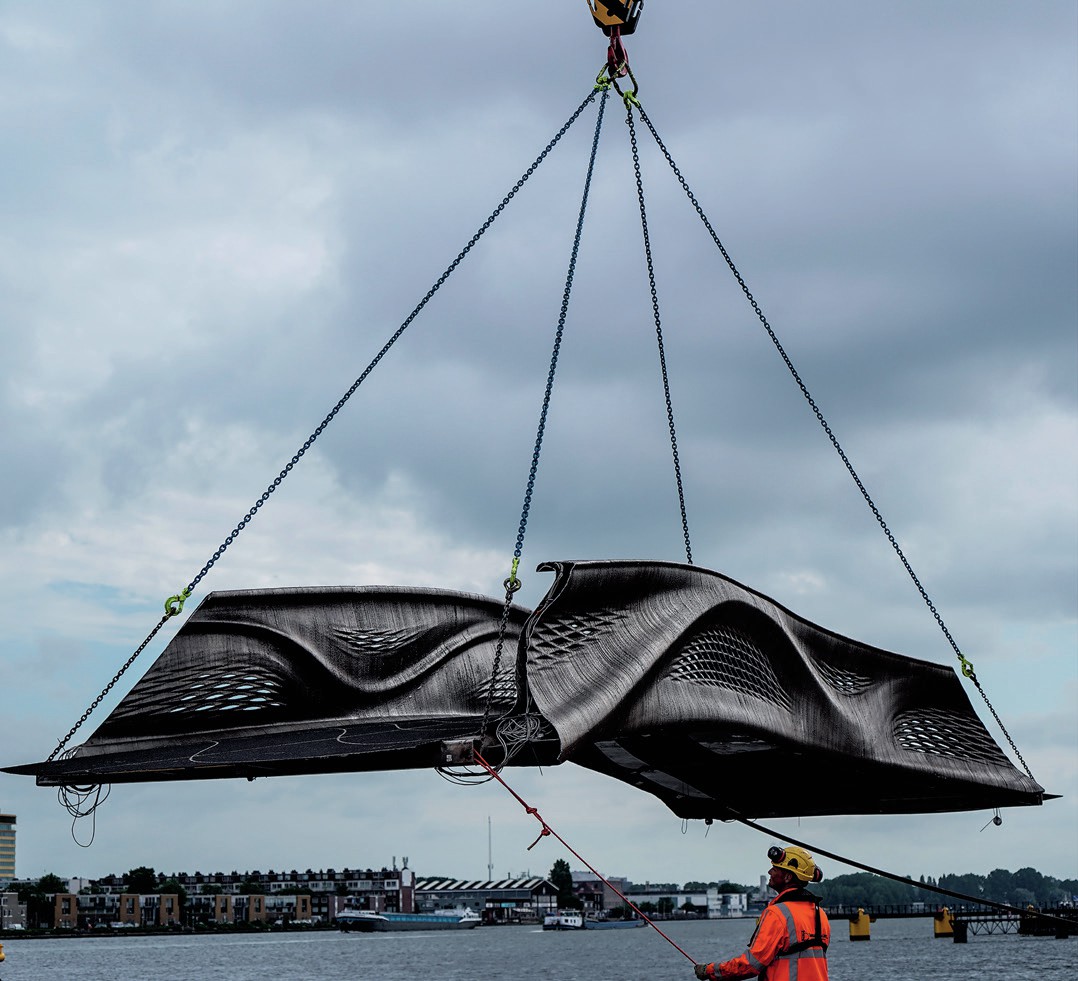
The world’s first 3D-printed bridge was opened in July 2021. The 12-metre stainless steel pedestrian bridge has a mass of 4.5 tonnes and spans the Oudezijds Achterburgwal Canal in central Amsterdam (Figure 1). It was designed by the Joris Laarman Lab and manufactured by Dutch company MX3D, which specialises in 3D-printing large metal structures. Printing the bridge took 6 months, using robotic arms and welding torches to build up the structure layer by layer.
The bridge is a ‘smart bridge’. MX3D worked with other specialists, including the Alan Turing Institute at Imperial College, London, which developed a network of sensors installed in the bridge. After thorough testing, the bridge was towed along Amsterdam’s canals and lifted into place (Figure 2). The sensors will continue to monitor the bridge, recording structural changes, such as strain and vibration, as people travel over the bridge, along with environmental data, such as temperature. This will help engineers learn more about the bridge’s structure and the properties of 3D-printed steel, paving the way for 3D printing of larger and more complex structures.
Your organisation does not have access to this article.
Sign up today to give your students the edge they need to achieve their best grades with subject expertise
Subscribe




